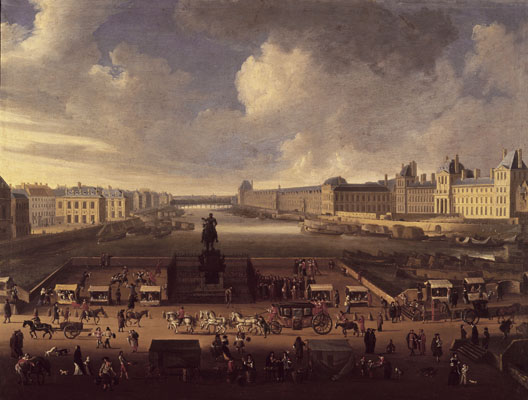Fr : version française / En: english version
Pont Neuf
The picture shows the Pont Neuf, meaning "New Bridge". Pont Neuf is aptly named, as it was the first stone bridge in Paris, and the first to be built unencumbered by edifices, confirming its role as a genuine thoroughfare. The first sidewalks also made their appearance at this time, marking a new departure in street sharing.
Henri IV opens the bridge
30 years' work split by civil wars: building the Pont Neuf was both difficult and costly. Henri IV used the city's tax on wine (earmarked to install fountains in Paris) to provide the necessary funding to finish the enterprise. In June 1603, the bridge was not yet finished, but the superstructure was in place and the king made his first crossing:
"On Friday 20th, the king crossed from Quay des Augustins to the Louvre via the Pont Neuf, which had yet to be made entirely safe, and on which few people ventured. Some had attempted the crossing but had broken their necks or fallen in the river, a fact explained to His Majesty, who pointedly replied that not one of these individuals was king, as he was."
City streets were gradually getting wider: Rue Dauphine, the continuation of Pont Neuf, is ten meters wide, though some thirty Paris streets are only five meters across.
Projections prohibited!
The projections in question referred to ledges and other such features jutting forth from the front of buildings and out of plumb with their foundations. A number of royal orders and edicts (from 1554 to 1607) restricted or prohibited corbelled construction while enforcing alignment rules designed to widen roadways.
The original wording of the law is given in the Répertoire méthodique et alphabétique de législation (in French).



























